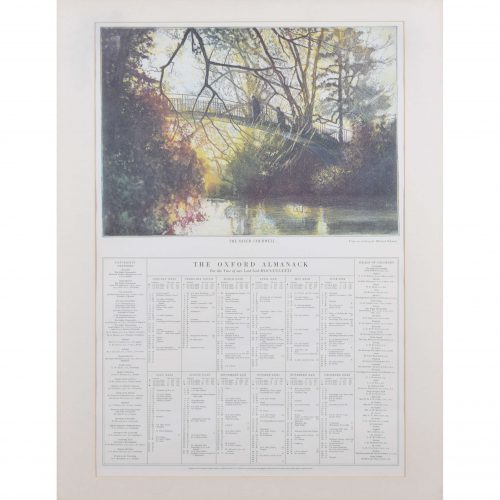-
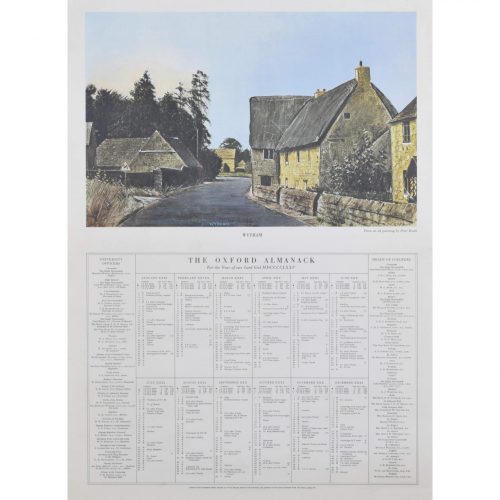
after Peter Brook (1927 - 2009)
Wytham - Oxford Almanack 1975
Lithograph 70 x 48 cm A lithograph of Wytham, a characterful and historic village north-west of Oxford. The original painting hangs in the Ashmolean Museum. Brook's painting was reproduced as a lithograph in 1975 to be published in the "Oxford Almanack". The Oxford Almanack was an annual almanack published by the Oxford University Press for the University of Oxford from 1674 through 2019 (when printing sadly ceased due to "dwindling interest"). The almanack traditionally included engravings or lithographs of the University and information about the upcoming year. Other almanack artists have included James Basire, Michael Burghers, J. M. W. Turner, and Michael Oelman. Peter Brook RBA was an English artist best known for his landscape paintings; he was nicknamed "The Pennine Landscape Painter". He was elected to the Royal Society of British Artists in 1962. Condition: very good. If you are interested, please email info@manningfineart.co.uk or call us on 07929 749056. Click here for other general views of Oxford. -
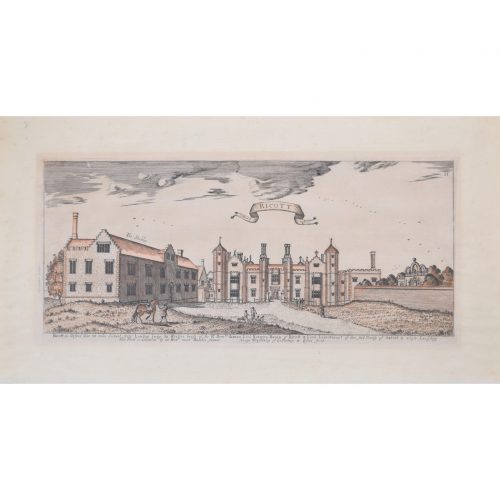
Henry Winstanley (1644 - 1703)
Rycote House, Oxfordshire
Engraving 19 x 44 cm Rycote House, Oxfordshire, was a Tudor (and later Georgian) country house. The house was built in the 16th century, and in 1920, after a period of decline, the extensive stables were converted into the present Rycote House. Condition: generally very good; some age toning. If you are interested, please email info@manningfineart.co.uk or call us on 07929 749056. Click here for other architectural drawings. -
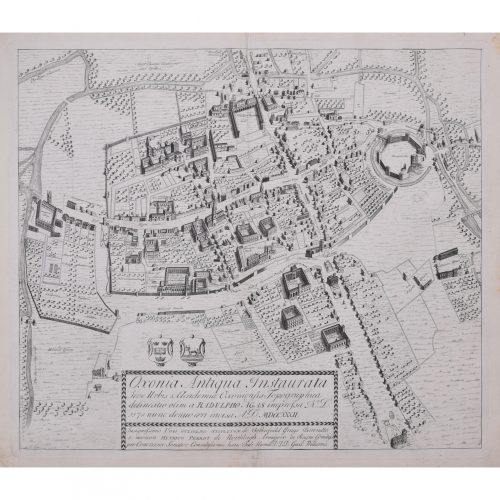
William Williams (Welsh, active 1724 - 1733)
The First Map of Oxford (1733)
Engraving 47 x 54 cm In 1578, Ralph Agas drew the first ever map of Oxford, studded with the first colleges of the University. In 1733 it was engraved by William Williams for publication in the Oxonia Depicta, a book of illustrations depicting similar views as David Loggan's volume of engravings. Ralph Agas was an English surveyor and cartographer. He was born in Suffolk and lived there throughout his life, although he travelled regularly to London. He began to practise as a surveyor in about 1566, and has been described as "one of the leaders of the emerging body of skilled land surveyors". regular work consisted of drawing up local estate maps and surveys for a variety of clients. He was one of the first estate surveyors to move beyond the traditional practice of compiling purely written descriptions of landed property, and to supplementing them with measured maps. Condition: generally very good; a few marks to margins. Central fold as issued. If you’d like to know more, please email info@manningfineart.co.uk or call us on 07929 749056. Click here for other general views of Oxford. -
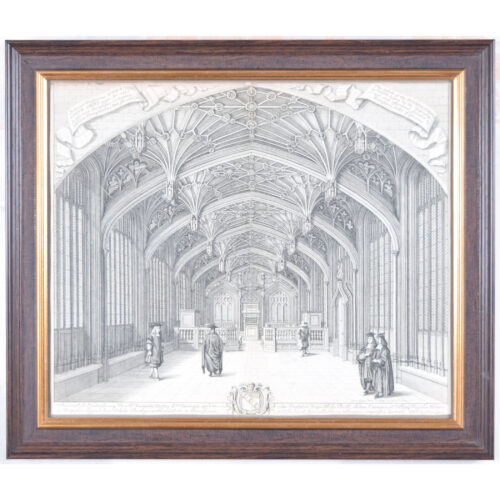
David Loggan (1634 - 1692)
The Divinity School, Oxford (1675)
Engraving 33 x 41 cm David Loggan's view of Oxford's medieval Divinity School, which was once the beating heart of theological studies at the University. Of particular interest here is the trompe l'oeil scroll of torn paper which frames the view. Loggan was born to English and Scottish parents, and was baptised in Danzig in 1634. After studying engraving in Danzig with Willem Hondius (1598-1652 or 1658), he moved to London in the late 1650s, going on to produce the engraved title-page for the folio 1662 Book of Common Prayer. He married in 1663 and moved to Nuffield in Oxfordshire in 1665. Loggan was appointed Public Sculptor to the nearby University of Oxford in the late 1660s, having been commissioned to produce bird’s-eye views of all the Oxford colleges. He lived in Holywell Street as he did this. The 'Oxonia Illustrata' was published in 1675, with the help of Robert White (1645-1704). Following its completion, Loggan began work on his equivalent work for Cambridge; the 'Cantabrigia Illustrata' was finally published in 1690, when he was made engraver to Cambridge University. The 'Oxonia Illustrata' also includes an engraving of Winchester College (Winchester and New College share William of Wykeham as their founder) whilst the 'Cantabrigia Illustrata' includes one of Eton College (which shares its founder, Henry VIII, with King’s College). Bird’s-eye views from this era required a particular talent as an architectural perspectivist; it was not until 1783 that it became possible for artists to ascend via hot air balloons and view the scenes they were depicting from above. Loggan thus had to rely on his imagination in conceiving the views. Loggan’s views constitute the first accurate depictions of the two Universities, in many ways unchanged today. Whilst the Oxford engravings were produced in reasonable numbers and ran to a second edition by Henry Overton (on thicker paper and with a plate number in Roman numerals in the bottom right-hand corner), those of Cambridge were printed in much smaller numbers. The Dutchman Pieter van der Aa published some miniature versions of the engravings for James Beverell’s guidebook to the UK, 'Les Delices de la Grande Bretagne' (circa 1708). The contemporary artist Andrew Ingamells (born 1956) has produced a highly-acclaimed series of etchings which bring Loggan’s original vision up to date. Condition: trimmed within platemark and mounted to board, otherwise in very good condition. If you are interested, please email info@manningfineart.co.uk or call us on 07929 749056. Click here for other general views of Oxford. -
Out of stock
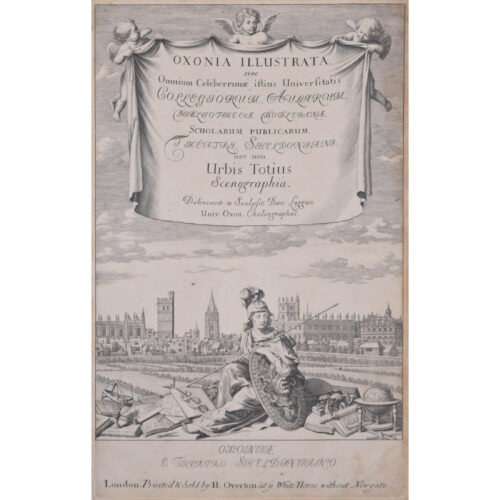
David Loggan (1634 - 1692)
Frontispiece to the Oxonia Illustrata (1675)
Engraving 38 x 24 cm The intricately engraved frontispiece to Loggan's 'Oxonia Illustrata', featuring cherubs bearing the volume's title on a banner and Minerva, goddess of wisdom, sitting before a panorama of Oxford's resplendent architecture. David Loggan's view of Oxford's medieval Divinity School, which was once the beating heart of theological studies at the University. Of particular interest here is the trompe l'oeil scroll of torn paper which frames the view. Loggan was born to English and Scottish parents, and was baptised in Danzig in 1634. After studying engraving in Danzig with Willem Hondius (1598-1652 or 1658), he moved to London in the late 1650s, going on to produce the engraved title-page for the folio 1662 Book of Common Prayer. He married in 1663 and moved to Nuffield in Oxfordshire in 1665. Loggan was appointed Public Sculptor to the nearby University of Oxford in the late 1660s, having been commissioned to produce bird’s-eye views of all the Oxford colleges. He lived in Holywell Street as he did this. The 'Oxonia Illustrata' was published in 1675, with the help of Robert White (1645-1704). Following its completion, Loggan began work on his equivalent work for Cambridge; the 'Cantabrigia Illustrata' was finally published in 1690, when he was made engraver to Cambridge University. The 'Oxonia Illustrata' also includes an engraving of Winchester College (Winchester and New College share William of Wykeham as their founder) whilst the 'Cantabrigia Illustrata' includes one of Eton College (which shares its founder, Henry VIII, with King’s College). Bird’s-eye views from this era required a particular talent as an architectural perspectivist; it was not until 1783 that it became possible for artists to ascend via hot air balloons and view the scenes they were depicting from above. Loggan thus had to rely on his imagination in conceiving the views. Loggan’s views constitute the first accurate depictions of the two Universities, in many ways unchanged today. Whilst the Oxford engravings were produced in reasonable numbers and ran to a second edition by Henry Overton (on thicker paper and with a plate number in Roman numerals in the bottom right-hand corner), those of Cambridge were printed in much smaller numbers. The Dutchman Pieter van der Aa published some miniature versions of the engravings for James Beverell’s guidebook to the UK, 'Les Delices de la Grande Bretagne' (circa 1708). The contemporary artist Andrew Ingamells (born 1956) has produced a highly-acclaimed series of etchings which bring Loggan’s original vision up to date. Condition: trimmed within platemark and mounted to board, otherwise in very good condition. If you are interested, please email info@manningfineart.co.uk or call us on 07929 749056. Click here for other general views of Oxford. -
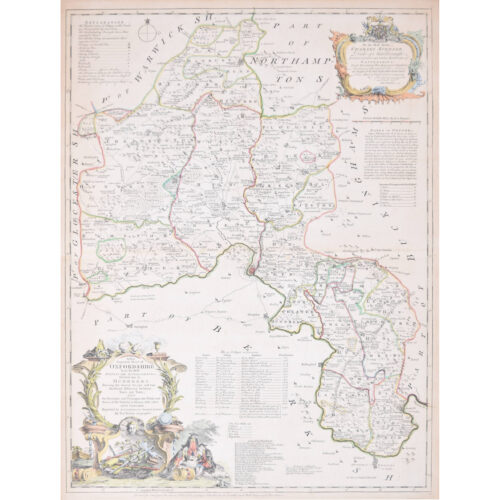
Thomas Kitchin (1719 - 1784)
Map of Oxfordshire (1764)
Engraving with later hand-colouring 72 x 54 cm This decorative map of Oxfordshire features a cartouche with three concentrating scholars and various educational trappings like rolls of parchment. The cartouche in the upper right corner dedicates the map to Charles Spencer, Duke of Marlborough, whose family seat of Blenheim Palace is just outside the city of Oxford. The map also sports a list of the University of Oxford's colleges, its rectories and vicarages, and a paragraph on the Earls of Oxford. Thomas Kitchin was an English engraver and cartographer. He was born in London and was apprenticed to the map engraver Emanuel Bowen in 1732. He produced John Elphinstone's map of Scotland (1746), the Geographia Scotiae (1749), and The Small English Atlas (1749) with Thomas Jefferys. Kitchen worked for the London Magazine and for the King; there is also some debate as to whether he passed off other cartographers' work as his own. Condition: generally very good; central fold as issued, another fold to middle of top half, three tiny losses (a millimetre or two) just outside plate mark to left side. If you are interested, please email info@manningfineart.co.uk or call us on 07929 749056. Click here for other decorative maps. -
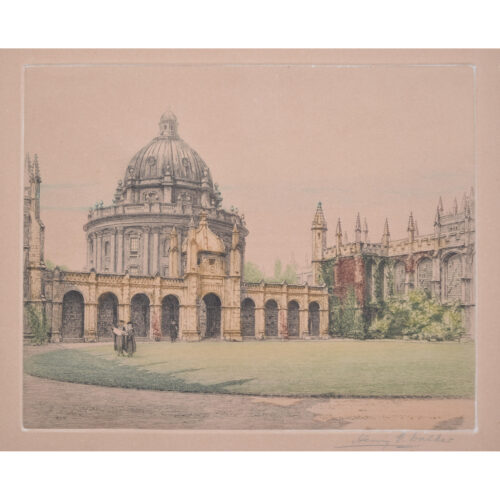
Henry George Walker (1876 - 1932)
The Radcliffe Camera from All Souls College, Oxford
Etching 20 x 25 cm Signed lower right in pencil. The artist depicts the North Quadrangle of All Souls, with the Radcliffe Camera peeking in. Two fellows contemplate a document as a third approaches. Henry Walker was born in Birmingham and specialised in architectural and landscape etchings. Condition: generally very good. If you’d like to know more, please email info@manningfineart.co.uk or call us on 07929 749056. Click here for other views of All Souls. -

after Edward Dayes (1763 - 1804)
Oxford (1792)
Hand-coloured engraving 15 x 20 cm Published February 1st 1792 by Harrison & Co, Paternoster Row. A charmingly-coloured Oxford punting scene, with Magdalen Tower and other dreaming spires behind. Edward Dayes was an English watercolour painter and mezzotint engraver. He first exhibited at the Royal Academy in 1786, when he showed a portrait and views of Waltham Cross and Canterbury. In the three following years he exhibited both miniatures and landscapes. He continued to exhibit at the Academy regularly until the year of his death, contributing a total of 64 works. He also exhibited at the Society of Artists, and worked as draughtsman to the Duke of York and Albany. Condition: very good. If you’d like to know more, please email info@manningfineart.co.uk or call us on 07929 749056. Click here for other general views of Oxford. -
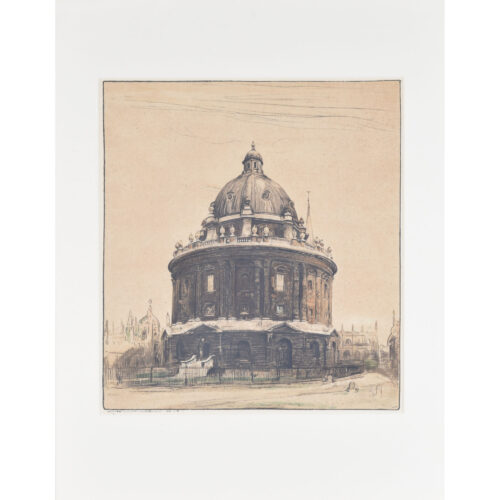
William Nicholson (1872 - 1949)
The Radcliffe Camera, Oxford
Lithograph 35 x 28 cm Signed lower left and numbered 10 in ink. Between 1902 and 1904 William Nicholson lived in Woodstock; during this period he made several architectural studies of Oxford's colleges and other University buildings. Sir William Nicholson was a British painter and printmaker. He is also known as an illustrator, author of children’s books, stained glass designer, and theatre set designer. Condition: very good. If you are interested, please email info@manningfineart.co.uk or call us on 07929 749056. Click here for other general views of Oxford. -
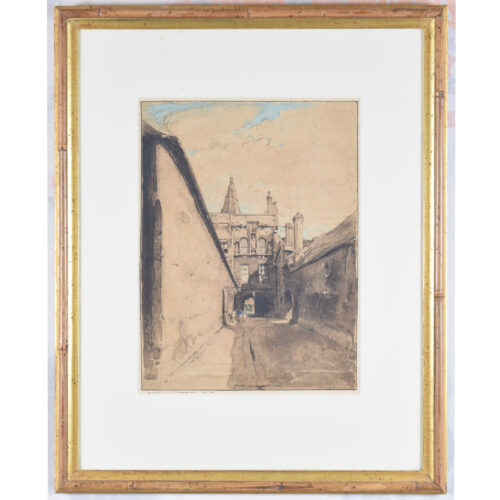
William Nicholson (1872 - 1949)
New College Lane, Oxford
Lithograph 35 x 28 cm Signed lower left and numbered 10 in ink. Between 1902 and 1904 William Nicholson lived in Woodstock; during this period he made several architectural studies of Oxford's colleges and other University buildings. Sir William Nicholson was a British painter and printmaker. He is also known as an illustrator, author of children’s books, stained glass designer, and theatre set designer. Condition: very good. If you are interested, please email info@manningfineart.co.uk or call us on 07929 749056. Click here for other pictures of New College, Oxford. -
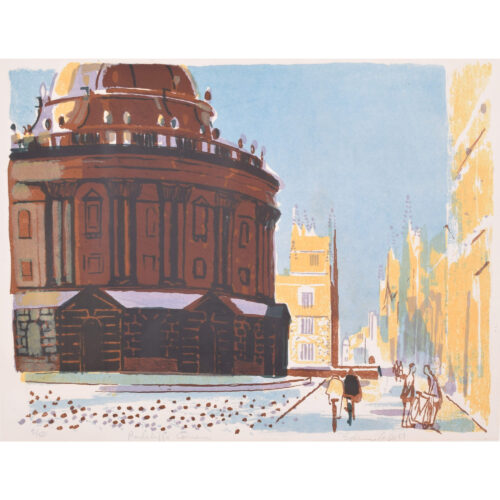
Edwin La Dell (1914-1970)
The Radcliffe Camera, Oxford
Lithograph 41 x 54 cm Numbered 2/50, titled, and signed below in pencil. Radcliffe Square in autumn shades. The Radcliffe Camera dominates the lithograph, and La Dell expertly captures the afternoon sun on the golden stone of Brasenose and the University Church. Students cycle towards the High. La Dell studied at the Sheffield School of Art, where he won a scholarship to the Royal College of Art. From 1934 to 1940 John Nash was the head of printmaking there, and taught La Dell. La Dell himself became head of lithography there in 1948, and remained in post until his death. During the war La Dell was an official war artist and a camofleur, but he is probably best known for his lithographs of Oxford and Cambridge that he published himself. His works are widely held in the public collections, including the Royal Academy and the Government Art Collection, the latter of which holds many of his views of Cambridge. Condition: generally very good. Fractional age-toning to paper; old glue marks to margin which will be under the mount when framed. If you are interested, please email info@manningfineart.co.uk or call us on 07929 749056. Click here for other general views of Oxford. -
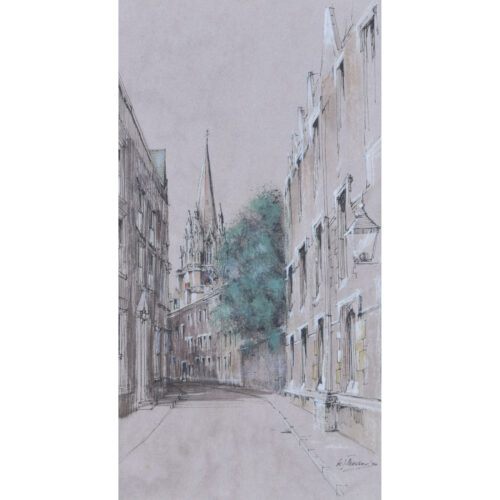
Ken Messer (1931 - 2018)
Oriel Street (1974)
Watercolour 39 x 21 cm Signed and dated lower right. The painter and draughtsman Ken Messer is closely related to Oxford and its architecture in several ways. Born in Newport, South Wales, he was educated at the City of Oxford High School for Boys in Oxford, and then spent six years working as an accountant in Oxford. He then joined British Overseas Airways Corporation (BOAC) as a steward, flying internationally. Injury due to a car accident during the 1960s meant that he joined the design department of Pergamon Press in Oxford at the age of 33. Six years later, he was appointed to the position of studio manager, in charge of art and design. In 1974, Messer left Pergamon Press to become a freelance graphic designer. He started painting more watercolours, becoming a full-time artist. During the 1980s, his ink drawings were regularly published in the Oxford Times. He has sometimes been called "The Oxford Artist" because of his large number of works depicting Oxford. He and his wife Dilys lived at first in Richmond upon Thames and then in Abingdon, just south of Oxford. Messer's work has been shown at the Mall Galleries for the annual exhibitions of the Royal Institute of Painters in Water Colours annual exhibitions. Condition: very good. If you are interested, please email info@manningfineart.co.uk or call us on 07929 749056. Click here for other views of Oxford. -
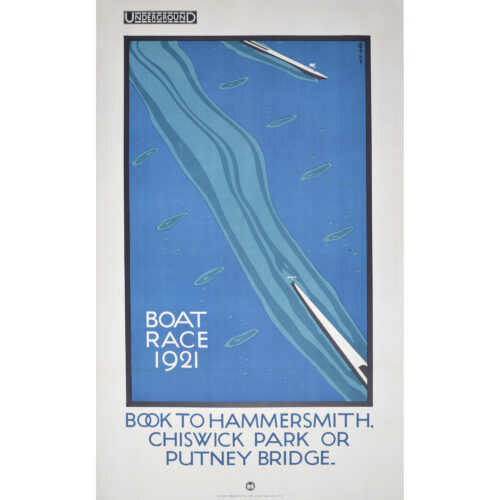
Charles Paine (1895 - 1967)
Boat Race 1921
Lithograph 102 x 64 cm Signed upper right in plate. Charles Paine's iconic 1921 poster encourages the use of the London Underground in order to view the Boat Race. The slick design features one boat’s stern disappearing from the frame and the other boat’s bow entering it (Cambridge won that year), alongside a strikingly Art Deco typeface. Charles Paine was a versatile and prolific designer, who drew on his training in stained glass to create bold, structured and highly stylised lithographs for a variety of companies. This decorative and brightly-coloured map illustrates the various county regiments of Great Britain, with a border of regimental badges. Condition: backed to linen; excellent, two small areas of repair to margin (invisible); hint of old folds. If you are interested, please email info@manningfineart.co.uk or call us on 07929 749056. Click here for other Boat Race pictures. -
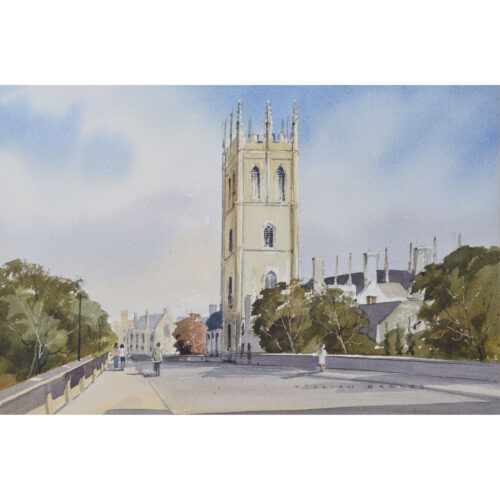
William Barnes (1916 - ?)
Magdalen Tower and Bridge
Watercolour 25 x 36 cm Signed lower right in ink. Magdalen Tower in all her glory, with pedestrians and a cyclist meandering over the bridge below. William Barnes was born in Brixton and trained at the Camberwell School of Art in the 1930s and the Wimbledon School of Art in the 1950s. Condition: good. If you are interested, please email info@manningfineart.co.uk or call us on 07929 749056. Click here for other views of Magdalen College, Oxford.

